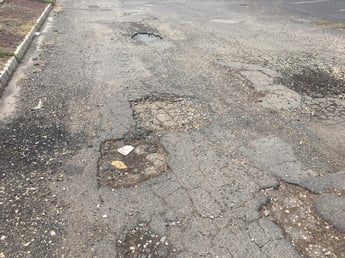
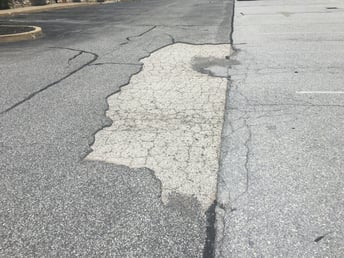
In the pictures above you can see where an asphalt overlay was installed over a parking lot with extensive alligator cracks which have resurfaced back up into the new asphalt
Can you pave over a parking lot with alligator cracks, potholes or extensive random cracking?
A question I am often asked is: "Can I just pave over the existing parking lot?"
The answer is yes & no...
If the parking lot is older, oxidized, raveled and in poor condition aesthetically than the answer is: YES
If the parking lot is older, has extensive cracking, extensive alligator cracked areas, puddles, potholes, areas of standing water and poor drainage the answer (From an engineering standpoint) is: NO
1. Reason #1 why a parking lot with cracks cannot just be "paved" or "resurfaced"
If you pave over a parking lot with extensive cracking or alligator cracking the cracks are going to re-appear in 2-3 years after installation and with-in 5-7 years the entire parking lot will be a carbon copy of what was previously paved over.
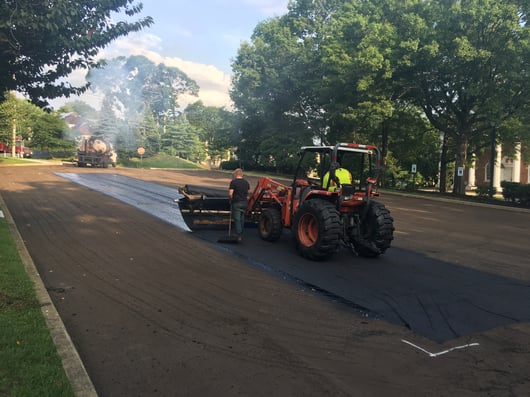
If you have extensive cracking a geotextile paving fabric can be installed prior to paving to prevent reflective cracking from coming up through the new asphalt overlay.
2. Reason #2 why a parking lot with potholes cannot just be "paved" or "resurfaced"
You have to investigate what caused the potholes. Was it extensive cracking which allowed water to seep through to the base and weaken it? Is there poor sub grade soils below the parking lot (ie: clay, no stone etc)? Is the area lower and constantly holding water? Was the asphalt too thin and not able to support the weight of the traffic?
The potholes then need to be boxed out and removed full depth, the sub grade inspected with an 80,000 lb loaded dump truck to check for vertical movement and then patched with binder asphalt (3/4" stone) prior to installing the asphalt overlay.
3. Reason #3 why a parking lot with drainage issues cannot be "paved" or "resurfaced"
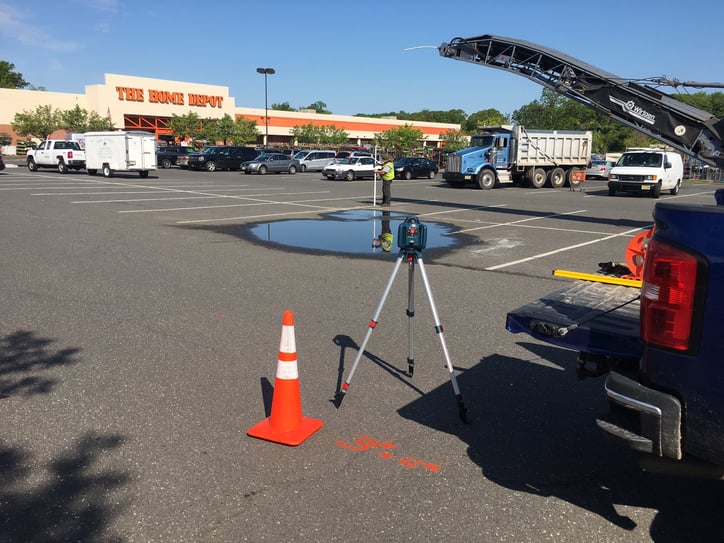
You only have one opportunity to correct drainage issues in a parking lot and it is BEFORE paving. Some contractors will say "If there was a puddle there before we paved there will be a puddle there after we pave!" If you have a contractor telling you that, please pick up the phone and call me right away at 1-877-349-2774- I would love to earn your business if your properties are in NJ, PA, DE or MD and show you how we are drainage correction experts.
The best part about repaving is you have the opportunity to get rid of that "puddle" your tenants keep reminding you about each month they pay the rent or the small ice skating rink you have in the winter which has won you a seat in the penalty box in Court as a witness being grilled by a Plaintiffs personal injury attorney.
Some ways drainage correction is achieved:
- Installing trench drains or small relief drains
- Curb cuts to relieve water into permeable surfaces
- Milling / Profiling to remove high spots
- Installing a drainage swale (Concrete or Asphalt)
Asphalt leveling course being installed prior to paving to promote positive drainage away from the curbline and into a catch basin
CONCLUSION:
If a parking lot that has extensive cracking, potholes and water issues is just "paved over" then you will be dealing with the same issues again in the near future.
Proper preparation is key to a successful parking lot paving project!




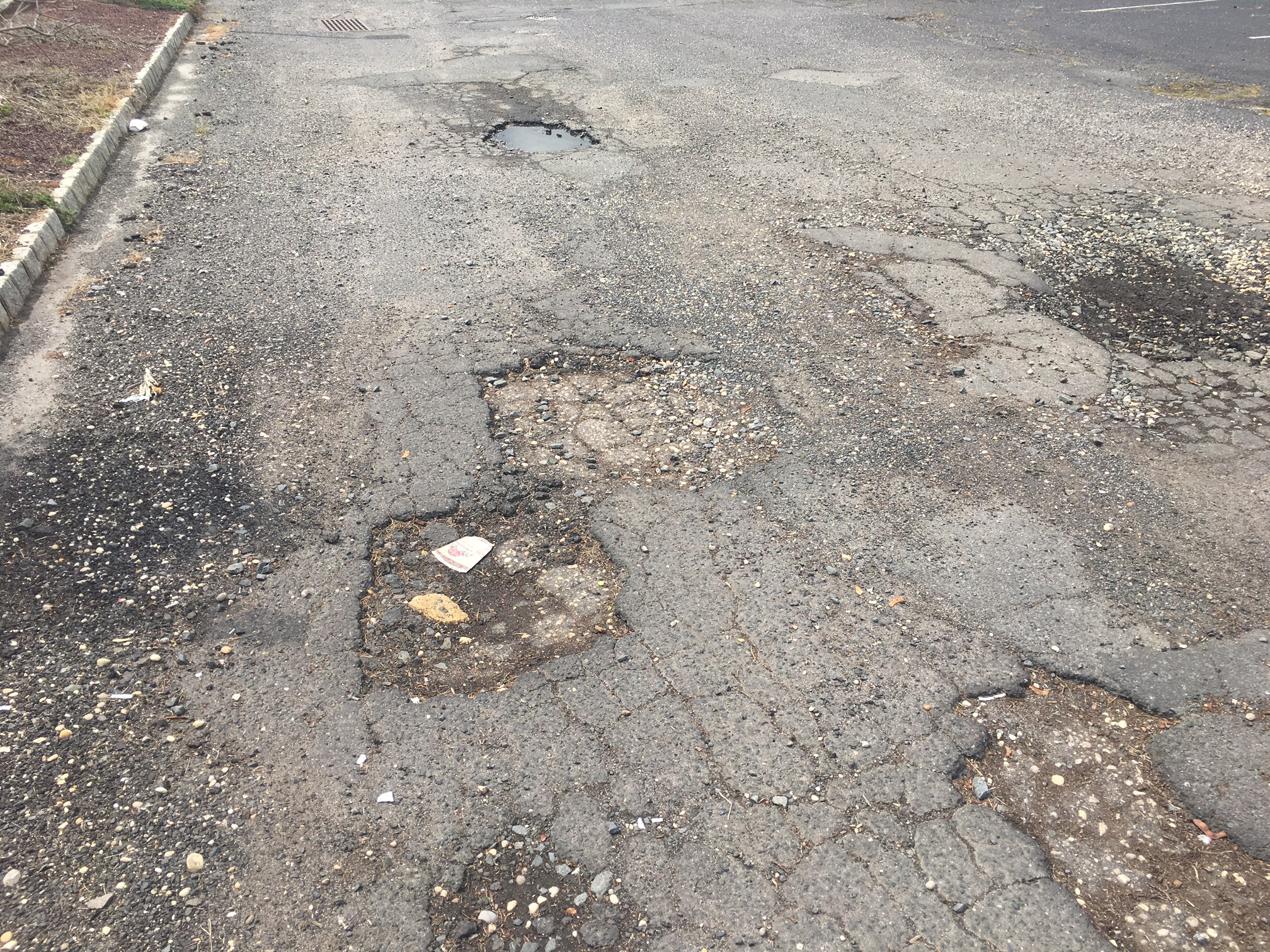





Leave a Comment